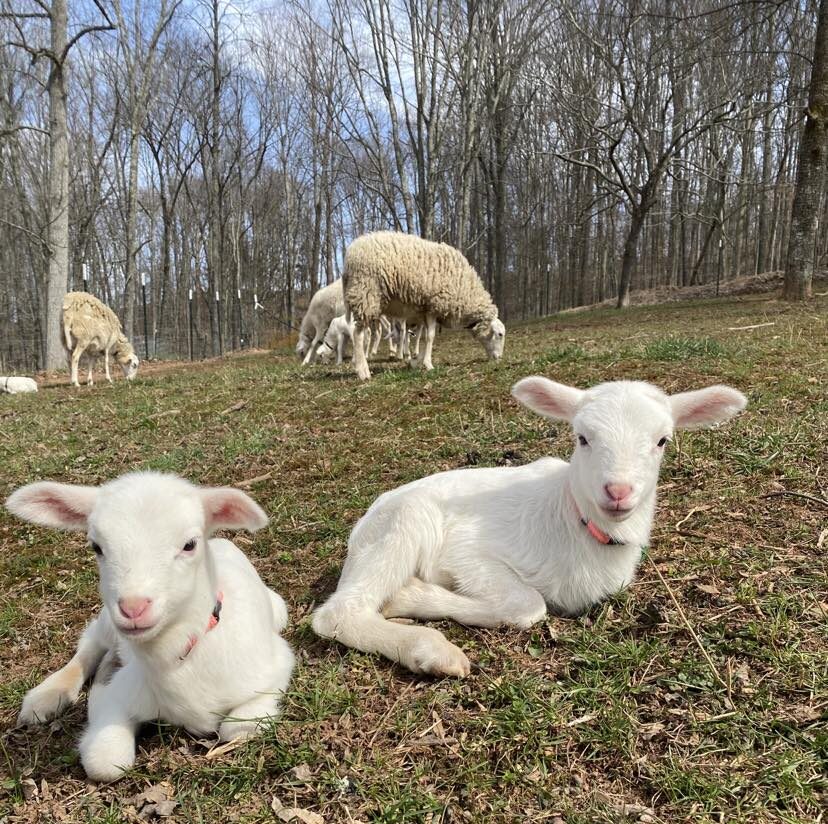Lambing can be such an exciting time on Trillium Family Farms, but it can also be stressful. This is especially true if it is your first lambing season. As we head into our third lambing season, I am incredibly
grateful to other shepherds’ willingness to answer questions.
Since our first lambing season, we have learned many things that may help other beginners. The first is that successful lambing begins before you even see those hooves. Providing adequate nutrition to mom before she gives birth allows for the mom to not only produce good quality colostrum, but also helps to make sure the lambs are strong and healthy at birth. On our farm, we start feeding barley fodder and grain 4 weeks prior to due dates.
During this time, we also give CD/T vaccines to the ewes and start preparing our lambing tote. Lambing totes look different for different farmers, but we make sure ours includes gloves (both nitrile and OB), lubricant, bottles and nipples, lamb sweaters in case its cold, trash bags, betadine, scissors, Nutri-drench, old towels, and chlorhexidine to disinfect gloves. We also verify that we have colostrum and milk replacer in the freezer, just in case.
About a week before we expect our lambs, we set up our lambing pens/bonding jugs. We lime the stalls and spread new bedding. Each pen gets hanging hay feeders, grain feeders and waterers. It’s important to remember to keep water up, as young lambs can drown in buckets on the ground.
Once lambs are born, if their umbilical cord is long and dragging, we trim it a bit and dip it in betadine. If the cord is short, we usually just leave it be. Ewes and their lambs remain in these bonding pens for at least 48 hours, depending on how mom and baby are doing. If we feel they are bonded, they are released into the main pasture with mom!

